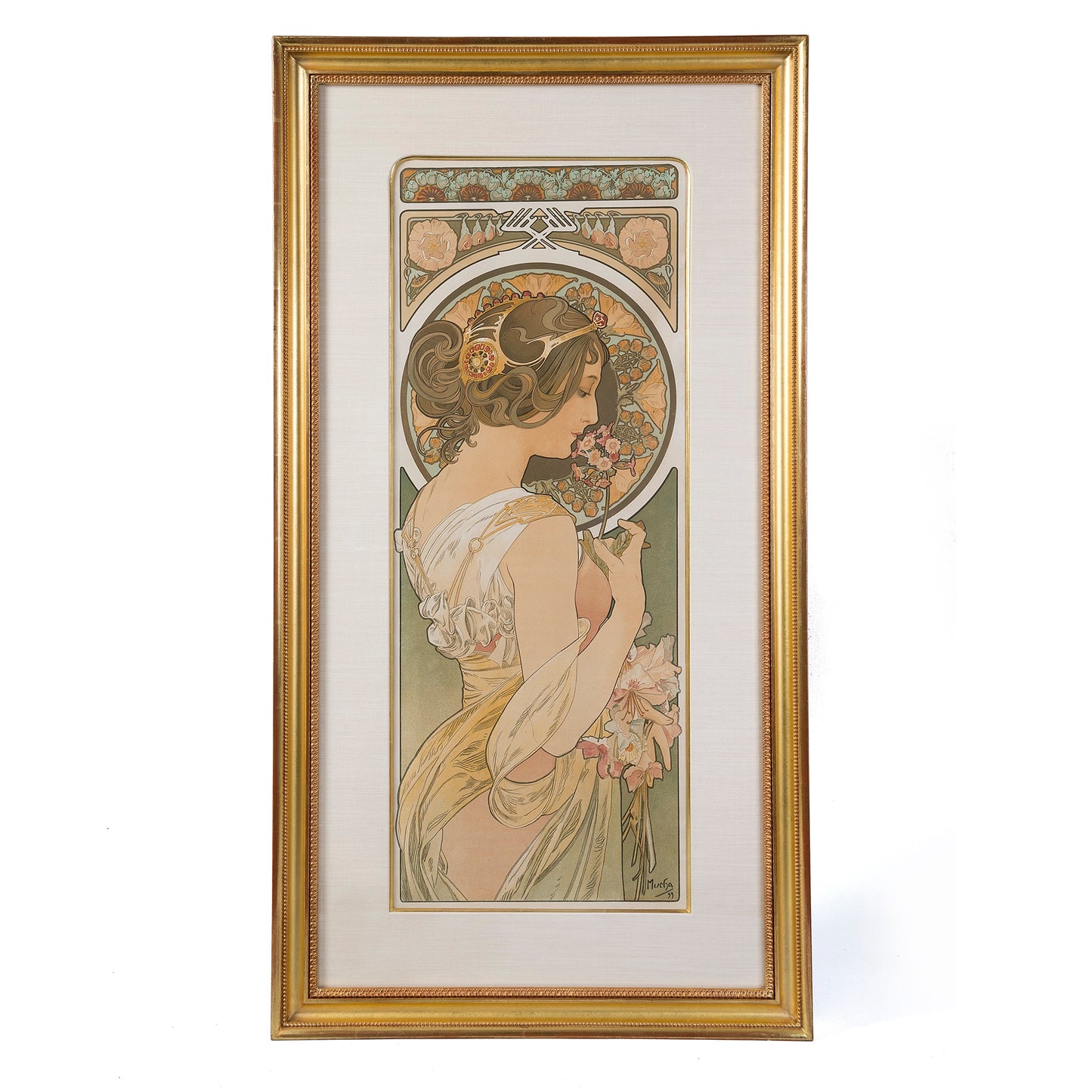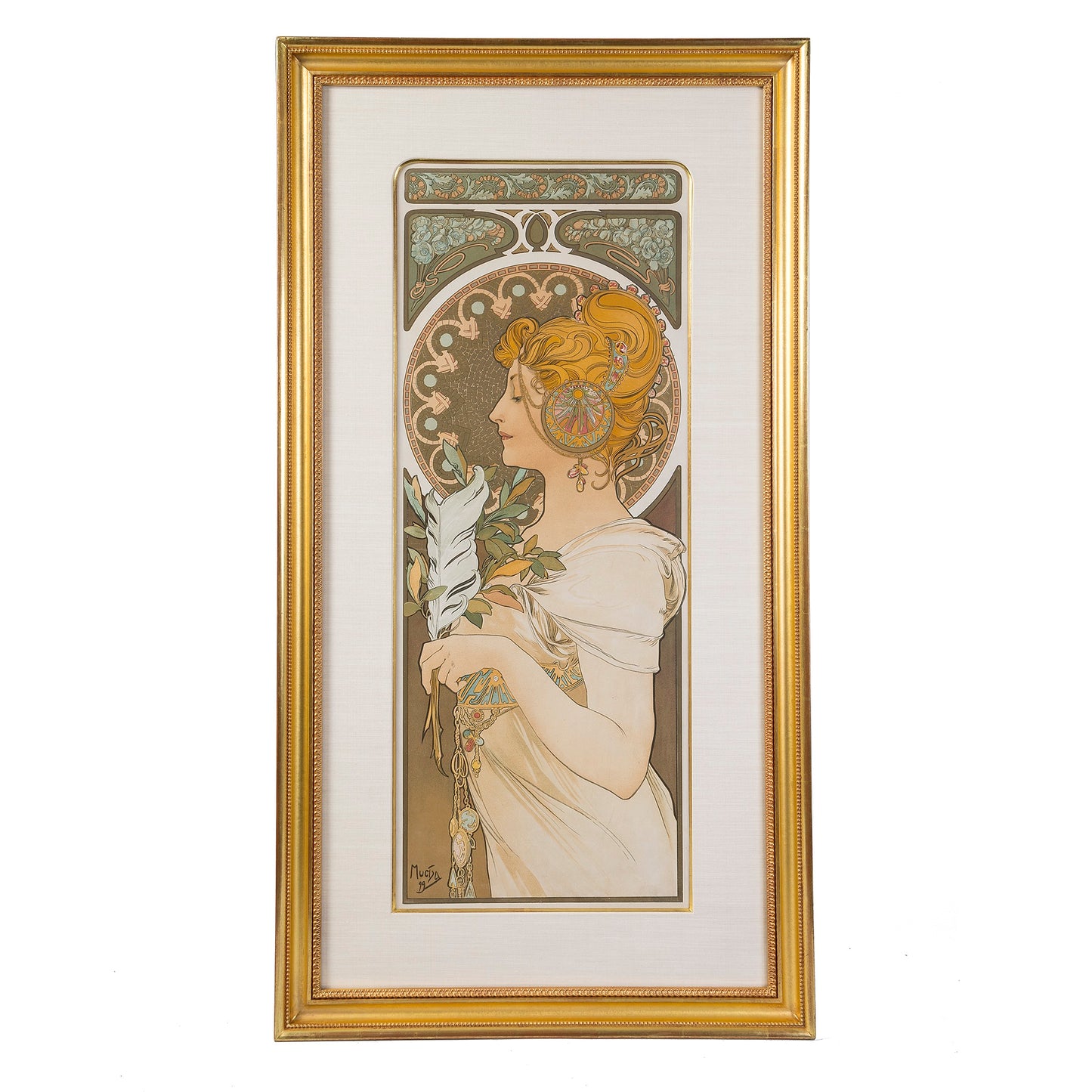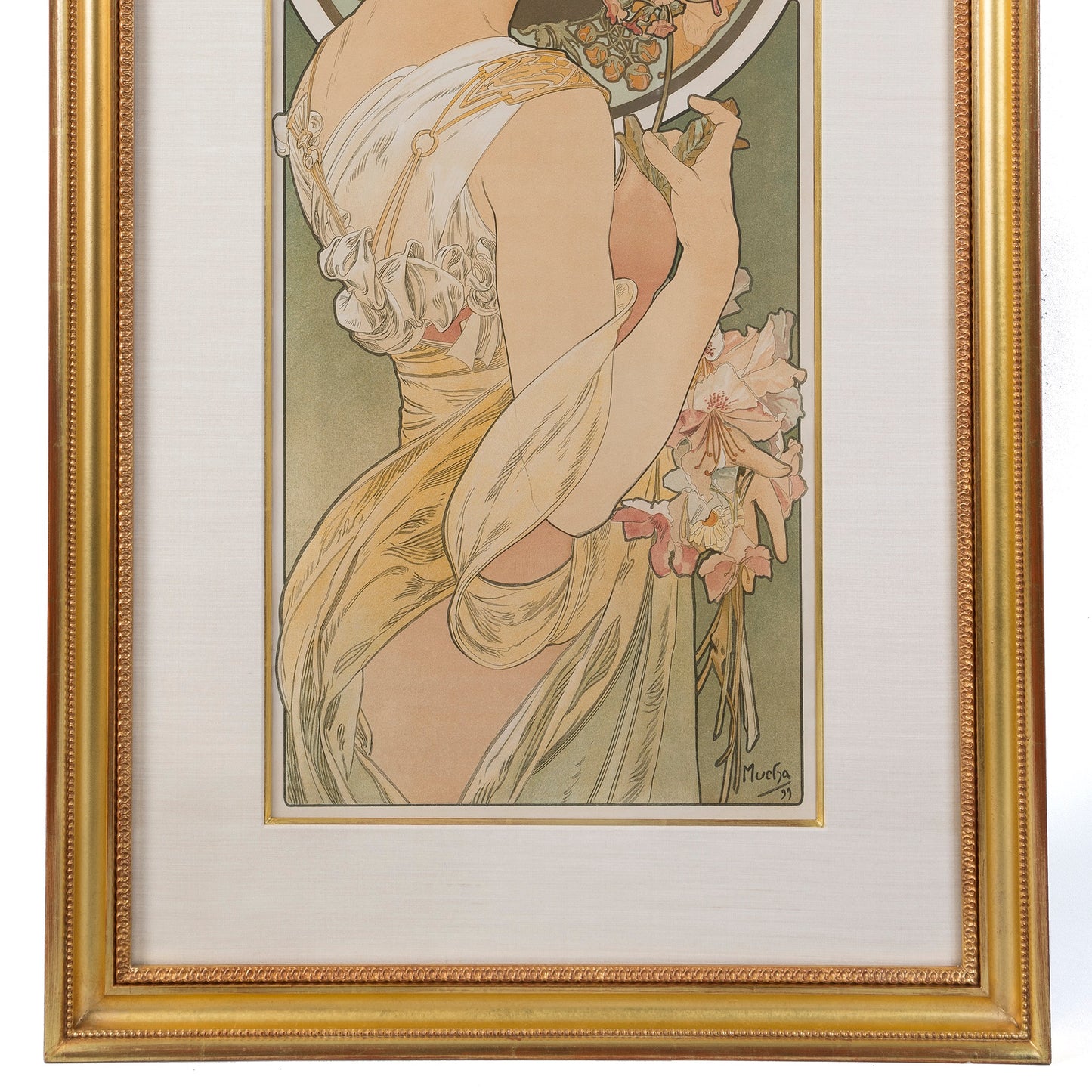Alphonse Mucha "La Plume et La Primevere" Lithograph
Item #: ML-21626
Artist: Alphonse Mucha
Country: France
Circa: 1899
Dimensions: 29" height, 11.25" width (unframed) 38" height, 20" width (framed)
Printer: Imp. F. Champenois, Paris (not shown)
Materials: Lithograph paper, Giltwood gesso frame
Signed: Mucha 99
Literature: Mucha/Art Nouveau, p. 198
Rennert/Weill, 64; Lendl/Prague, 219; Mucha/Art Nouveau, 51; PAI-XCII, 280
Item #: ML-21626
Artist: Alphonse Mucha
Country: France
Circa: 1899
Dimensions: 29" height, 11.25" width (unframed) 38" height, 20" width (framed)
Printer: Imp. F. Champenois, Paris (not shown)
Materials: Lithograph paper, Giltwood gesso frame
Signed: Mucha 99
Literature: Mucha/Art Nouveau, p. 198
Rennert/Weill, 64; Lendl/Prague, 219; Mucha/Art Nouveau, 51; PAI-XCII, 280























